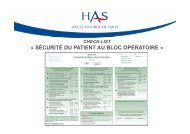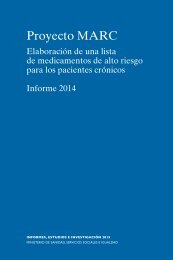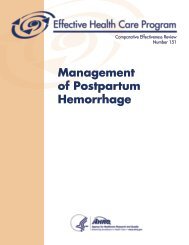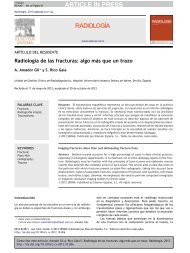for Invasive Procedures (NatSSIPs)
Z3q53
Z3q53
You also want an ePaper? Increase the reach of your titles
YUMPU automatically turns print PDFs into web optimized ePapers that Google loves.
OFFICIAL<br />
4.12 Sign out<br />
All patients undergoing invasive procedures under general, regional or local<br />
anaesthesia, or under sedation, must undergo safety checks at the end of the<br />
procedure but be<strong>for</strong>e the handover to the post-procedure care team: the sign out.<br />
Along with the sign in and time out, this is based on the checks in the WHO Surgical<br />
Safety Checklist and <strong>for</strong>ms part of the Five Steps to Safer Surgery. Noise and<br />
interruptions should be minimised during the sign out.<br />
1. Any member of the procedure team may lead the sign out. All team members<br />
involved in the procedure should be present at the sign out. The team member<br />
leading the sign out should verify that all team members are participating. This<br />
will usually require that they stop all other tasks and face the sign out lead.<br />
2. Sign out checks should be conducted at the end of the procedure and be<strong>for</strong>e<br />
the patient is awoken from general anaesthesia or, when general anaesthesia<br />
is not used, be<strong>for</strong>e the patient leaves the procedure room. These checks<br />
should include when relevant, but are not limited to:<br />
• Confirmation of the procedure per<strong>for</strong>med, to include site and side if<br />
appropriate.<br />
• Confirmation that instruments, sharps and swab counts are complete (or<br />
not applicable).<br />
• Confirmation that any specimens have been labelled correctly, to include<br />
the patient’s name and site or side when relevant.<br />
• Discussion of post-procedural care, to include any patient-specific<br />
concerns.<br />
• Equipment problems <strong>for</strong> inclusion in the debriefing.<br />
4.13 Debriefing<br />
Procedural team debriefing is a key element of practice in the delivery of safe patient<br />
care during invasive procedures, and <strong>for</strong>ms part of both the WHO Surgical Safety<br />
Checklist and the Five Steps to Safer Surgery. The debriefing should be seen as<br />
being as important a part of the safe per<strong>for</strong>mance of an invasive procedure as any of<br />
the other steps outlined in this document. Organisations should ensure that the job<br />
plans and working patterns of those involved in invasive procedures should allow and<br />
oblige them to attend debriefings in all but exceptional circumstances. Noise and<br />
interruptions should be minimised during the debriefing.<br />
1. A debriefing should be per<strong>for</strong>med at the end of all elective procedure<br />
sessions. A debriefing should also be per<strong>for</strong>med after all unscheduled or<br />
emergency procedure sessions. The debriefing may need to be conducted on<br />
a case-by-case basis if there is a change in key team members during a<br />
procedure session.<br />
44











